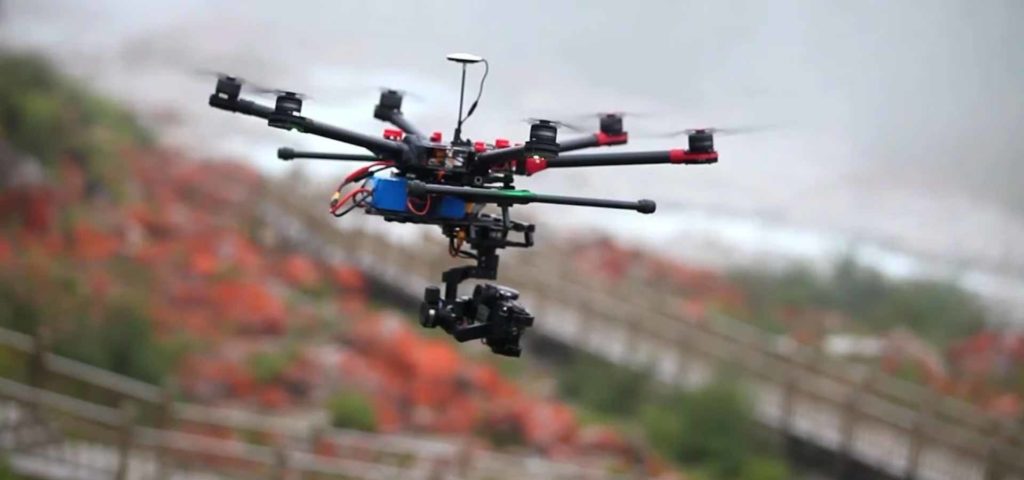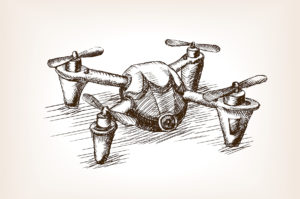This case study is pulled from the ATSB Website. Precision Autonomy was not involved in this operation in any way, including as an insurance underwriter. This is a hypothetical analysis of the situation, with additional information added in, and is intended for educational use only.
When managing risk, it important to both look to the past to see insights for improvement, but also to anticipate and actively prevent risk factors from becoming accidents and loss in the future. In this case study, we look at a past incident which resulted in a claim, and highlights some key points about drone safety systems, operational procedures and risk.
In-flight break-up
In late 2015, an operator of a DJI ‘Spreading Wings’ S900 Hexacopter prepared to conduct an aerial photography operation in Toowoomba, Queensland. Operating from the rooftop of a nine-storey building, the job was designed to take advertising videos for the Toowomba Carnival of Flowers, a floral event celebrating the incoming Spring Season. Down below, hundreds of guests roam the streets, ordering and congregating around makeshift food trucks, drinking wine and enjoying the festivities.
Doing a pre-flight risk assessment, the operator identified hazards, safety systems and emergency landing sites.
- The drone is designed with redundancies – In the event of rotor failure, the drone can still fly. The drone is fitted with a parachute, and deploys automatically under pre-programmed conditions. The drone is fairly new, with flight time totalling 10 hours.
- The flight is being conducted over a populated area
- The operation is within 3NM of the nearby Toowoomba aerodrome.
Following CASA’s guidelines and those set out under the ReOC, the operator ‘conducted pre-flight checks and made the appropriate broadcasts on the Toowoomba common traffic advisory frequency (CTAF) and performed control checks to verify the controls were working correctly.’
At 1415 Eastern Standard Time, the pilot launched the drone from the rooftop, performed the necessary checks, and began flying out to video the scenes below. 30 seconds in, a loud crack was heard and the pilot watched as the drone tumbled and descended rapidly. Attempts to deploy the parachute could not stop the drone from falling 10 stories to the ground, colliding with a parked car, denting the roof and destroying the drone.
There are a number of things that can be taken away from an incident such as this:
1. Drone safety systems that can appear make operations safer sometimes don’t function as they are designed. In this case, the redundancies of the drone – being designed to operate with 5 rotors, and to deploy a parachute under conditions – did not have any effect. There has been examples of systems actually causing accidents, particularly with parachutes:
- In Zurich, a Swiss Post delivery drone deployed its parachute after a mid-flight propeller failure. During it’s descent, the drone’s propellers cut off the tether, causing it to fall out of the sky and almost land on a group of kindergarten children.
- Our Head of Underwriting, Simon Hooper, recently recounted a story on Mirragin System’s podcast, where parachutes accidentally deployed due to an issue with the controller design. “We had a number of operators in a small space of time [who had claims] that kept deploying the parachute accidentally… They [the manufacturer] solved that issue by looking to other industries – the classic example is the Helicopter industry.. by depressing the button a little bit the operator had to physically push through the controller to activate the parachute.”
2. Operational procedures are paramount to the safety of not only the owner and operator of the drone, but the wider public. The operator did have the correct procedures in place:
- The pilot conducted all of the necessary pre-flight safety checks, including the drone’s service inspection, and to the Toowoomba CTAF.
- The pilot also identified suitable emergency landing sites.
Despite this, the drone’s hardware fault resulted in an unpredictable and dangerous descent. Could this have been prevented by better operational procedures? Probably not. Operating a drone is inherently dangerous, but the incident highlights the need to constantly be working to create as safe an environment as possible.
3. Things happen.. drone safety can’t be guaranteed and sometimes accidents can’t be stopped.
- There was no sign of shear or pre-existing damage prior to flight
- The operator did everything in their power to fly safely.
- …& the drone still malfunctioned.
As a result, the drone became (basically) a falling brick that thankfully only damaged a car. This highlights the importance of having a holistic risk strategy in place – including adequate drone insurance. The consequence of this accident could have spelt financial danger for the operator and the owner of the car. Assuming coverage was in place, this would have resulted in 2 claims:
- Damage to the Drone & Payload: Hull coverage would have covered the cost of replacing the drone.
- Damage to the Car: Liability coverage would have covered the cost to repair the damages made to the roof of the car.
For simplicity’s sake, let’s say the drone was worth $10,000, and the car damage was $5,000. Without drone insurance, the operator may have been out of pocket $15,000. For small businesses in particular, this unforeseen cost can spell disaster. With the correct coverage, the cost to the operator would merely be the excess resulting from the claim (let’s say, $500), and the insurance company would have covered the remainder of the costs. The skinny on this? Insurance makes up one important part of any risk mitigation strategy, and it should not be taken for granted.
Conclusion
It was clear that the incident occurred due to a manufacturing fault. That being said, there’s still a couple takeaways from this incident that can be applied in the future. Firstly, that Safety Systems and Operational Procedures aren’t a silver bullet, and accidents still happen. Secondly, it is important that as an industry and a community, that we continue to learn from examples such as this and continually work to improve processes and products (insurance included!) so that drones can be made a safer reality.
One way to mitigate financial and legal risk associated with operating a drone is to take out the correct drone insurance. Precision Autonomy offers insurance for drone operators in Australia and New Zealand. If you’re interested in a quote, head to our website here to organise yours within minutes.



